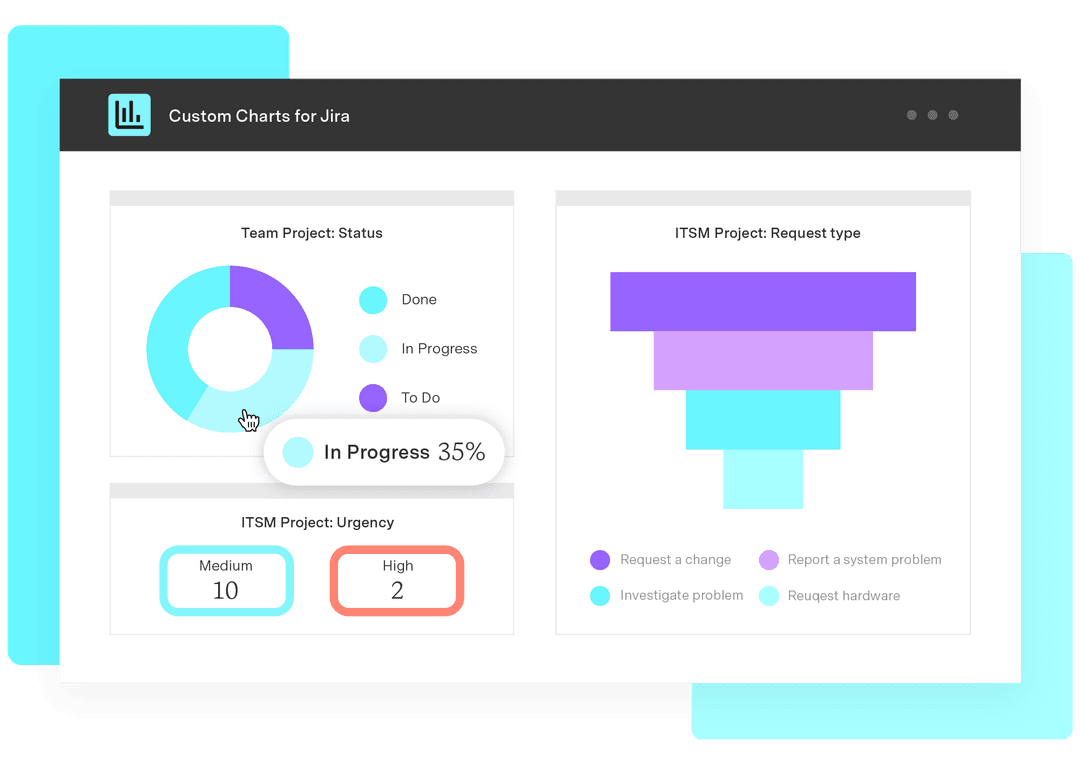Absence Dashboard in Jira: Know Who’s Out of Office and Which Projects are Impacted
Tempo Team
Keeping track of absences and their impact is crucial knowledge for a project manager or team lead. It enables them to understand what capacity the team has and whether (and why) important work is going to be delayed. The good thing is that you can have this data at your fingertips if you build an absence and capacity planning dashboard in Jira.
What you need: Out of Office Assistant for Jira and Custom Charts for Jira
In this article we’re going to use two apps from the Atlassian Marketplace to make our dashboard: Out of Office Assistant for Jira from Resolution and Custom Charts for Jira. These apps work together seamlessly. Out of Office provides specific Jira Query Language (JQL) fields about who is absent, and Custom Charts reports on them.
Which charts should you add to your absence and capacity planning Jira dashboard?
Once you have Out of Office Assistant and Custom Charts installed, you can start building a Jira dashboard that will help you diagnose the impact of absences on your company. Once you know what capacity you have and what pieces of work are likely to be delayed, you can adjust your planning and work around those constraints.
Here is an example absence and capacity planning Jira dashboard:
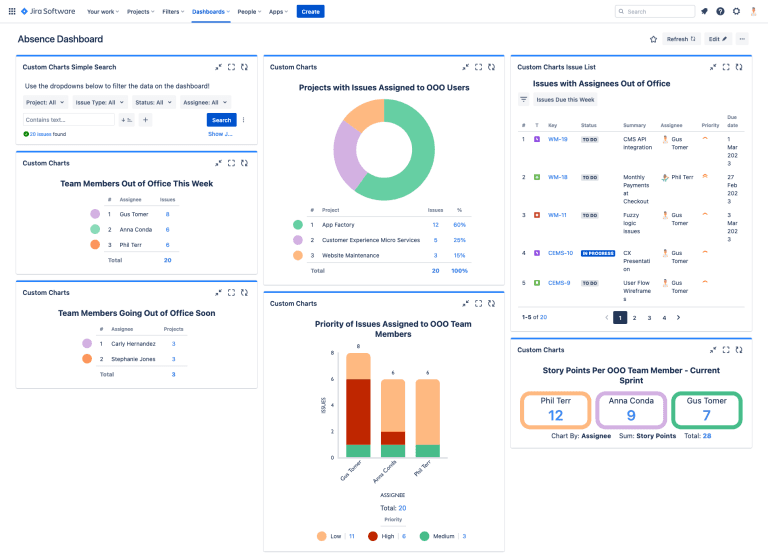
We recommend that you always include the following in an absence and capacity planning dashboard:
Team members currently out of office
List of issues assigned to those team members
A Simple Search gadget (which comes with Custom Charts) allowing you to filter the data down by issue type, assignee, status etc.
The most important information to have on an absence dashboard is who’s out and what tasks are affected. You can then home in on the impact of that with other charts.
Let’s take a closer look at the charts.
Chart 1: Team Members Out of Office This Week

The first thing any team leader planning work wants to know is who’s not here to do it. A simple table chart spotlights those absent so you know who’s not available for new tasks and meetings.
You can peek outside the dashboard at the Out of Office User View to find out the exact dates those team members are out, and if anyone’s covering their work.
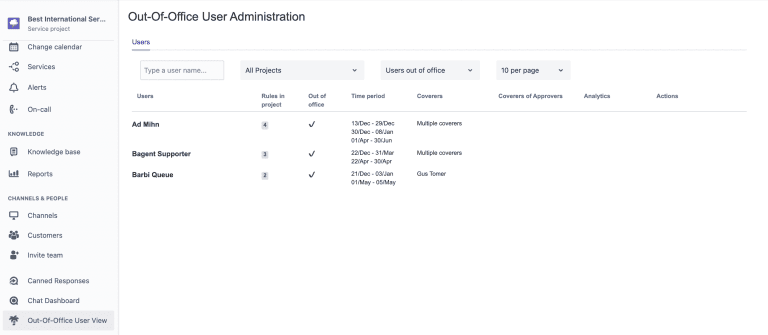
Chart 2: Issues with Assignees Out of Office This Week – Plus Quick Filters
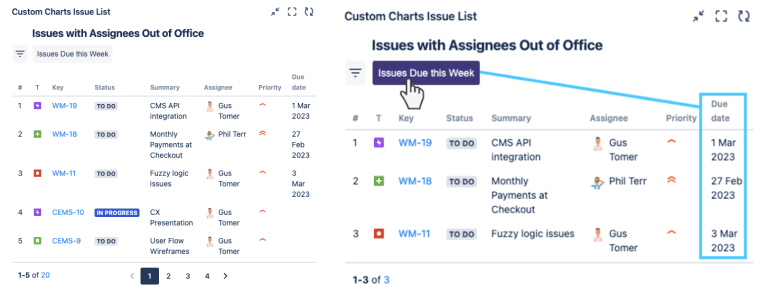
Custom Charts for Jira comes with an Issue List gadget (to replace the native Filter Results), enabling you to see a bunch of key information about an issue in an easy-to-read list.
Here, the issue list is warning you not to expect progress on these issues, because these team members are out. You can see what those issues are, along with their status and due date. You can also add a quick filter and use that to display only issues that are due this week. This can lead to a discussion about whether you need to reassign those issues to another team member, or move the due date.
In addition, you could use a JQL field that comes with Out of Office Assistant to get an understanding of when work will resume on the issue if you do nothing. If you use assignee.outofoffice.until > endofweek(1), you’ll get issues whose assignees are not returning before the end of next week. This will also inform decisions on reassignment and when you should move the due date to.
Chart 3: Priority of Issues Assigned to Out of Office Users
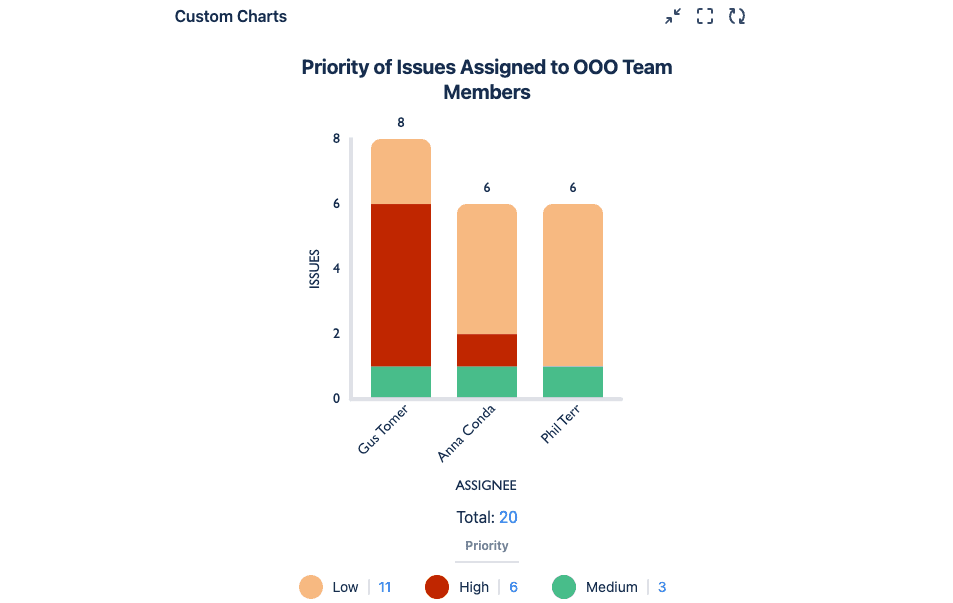
The 2D stacked bar chart above is a way of homing in on the impact of current absences on the team’s work. By displaying the number of issues per absent assignee, and the priority of those issues, team leaders can make decisions on what should be done.
In the chart above, Gus Tomer has the most issues and most of those are high priority. Therefore, his absence is having the most impact and maybe some of his issues, certainly the high priority ones, need reassigning to other team members. By contrast, most of Phil Terr’s issues are low priority, so his absence is less concerning and his issues can probably wait till he returns.
Chart 4: Impacted projects
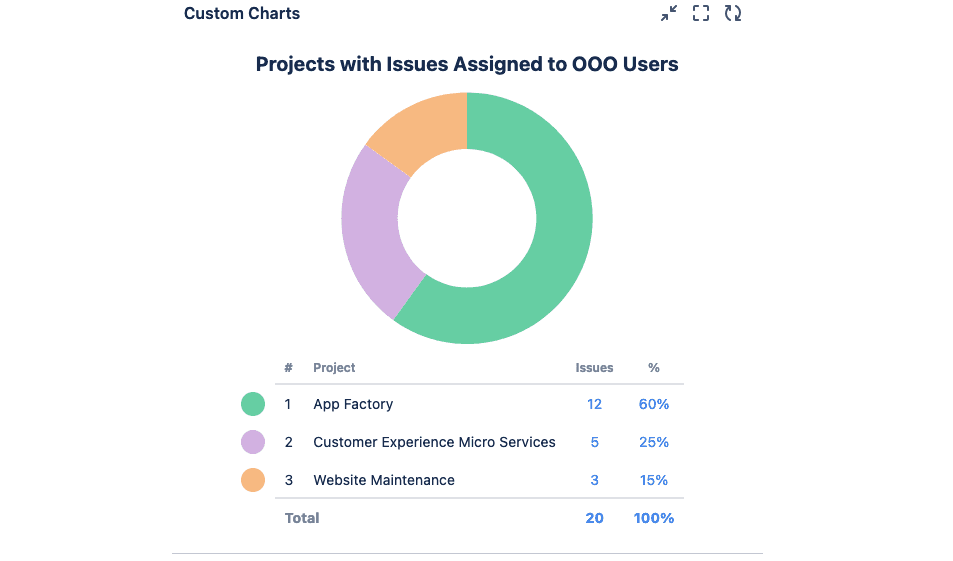
Sometimes project managers will want to see the bigger picture, i.e. how absences are affecting all projects. This will help them get a sense of which projects are most at risk. You can then weigh up the importance of one affected project versus another, in order to determine whether action needs to be taken to keep things moving while people are out.
For example, the pie chart above shows that the App Factory project is most at risk because it has the most issues assigned to absent users. As this is a development project with external, customer-facing deliverables, these issues need prioritizing and possibly reassigning. Website maintenance, on the other hand, is an internal project and it’s better to leave colleagues waiting than customers.
That said, a project manager might still want to drill down into the issues in those projects for more context. Simply click on the segments of the pie chart to go to a list of those issues. For example, if the issues in App Factory are features that customers are not necessarily expecting imminently, but an issue in Website Maintenance relates to a super-important page of the website that’s gone down, then you’ll want to give more urgent attention to the latter project.
Chart 5: Story points at risk this sprint

How much are we not going to accomplish this sprint? You can get an idea of how much work is at risk from the tile chart above. With 12 story points assigned to the absent Phil Terr, it looks like some of his work could end up incomplete. This can provoke early discussions about the best thing to do about it: reassign it now, move it to the backlog, or push it to the next sprint.
This chart is also useful for understanding how much you overcommitted, e.g. perhaps Phil Terr’s absence wasn’t given due consideration when planning the sprint if there are so many story points remaining. It’s particularly great if you’ve just started using sprints and you’re trying to get a sense of your average velocity, so you can plan better next time.
Chart 6: Team Members Going Out of Office Soon

The table chart above allows you to anticipate actions you could be taking in the future, even if you don’t do anything yet. If certain team members are going to be off soon, progress on their projects could slow. Knowing this in advance gives organizations the opportunity to reassign or reprioritize their issues. Clicking on each assignee allows you to get a sense of their projects’ current status, and which ones are most important to keep moving.
Conclusion: How absence planning on Jira dashboards make teams more proactive
Your absence and capacity planning dashboard serves as an overview of issues, sprints, and projects affected by current and future absences (with the Issue List serving to add more detail). It also acts as a starting point for discussing what action should be taken on the affected projects, and planning future work.
We should emphasize the term “starting point”. It’s important to note that the dashboard is only the beginning of the story. The opening scene intended to grab attention. You have to drill down into the issues to understand the rest of the story, i.e. what delays are acceptable and what delays aren’t. And once you have the whole story, you can decide whether to reassign issues, change deadlines, or wait and adjust your plans.
If you’d like to use Custom Charts with Out of Office Assistant to build an absence and capacity planning dashboard, but you’re not sure where to start, please reach out and we’ll give you a demo.


